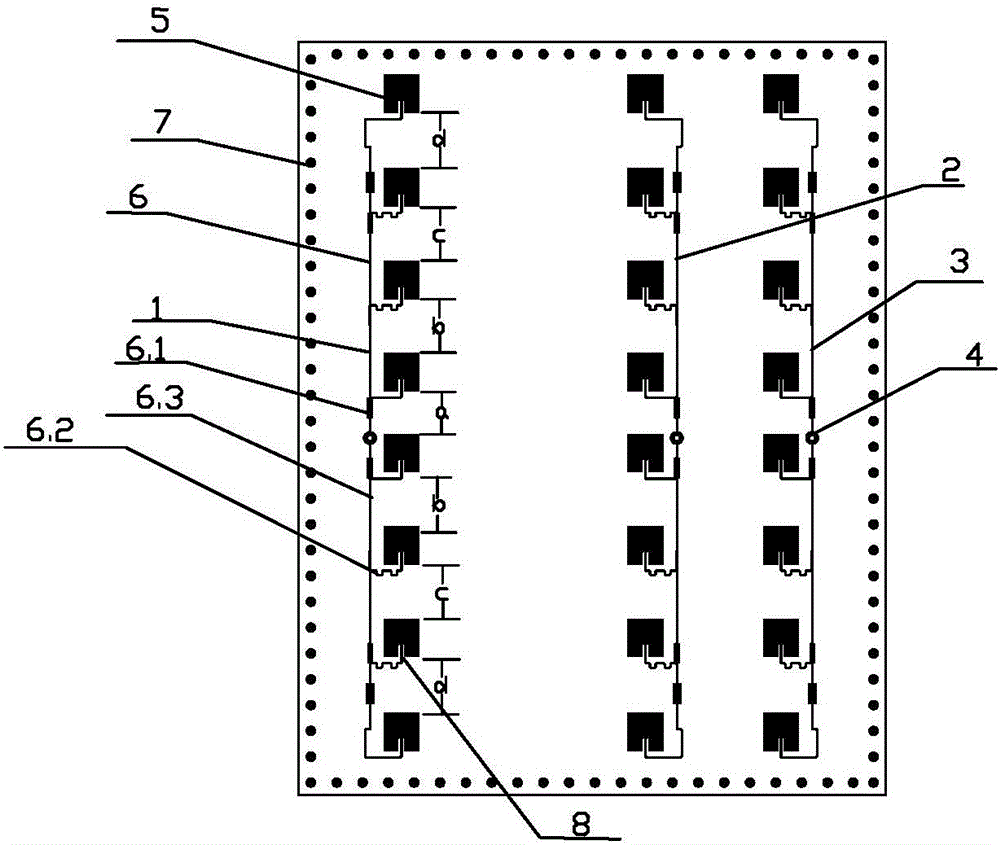K-wave band microstrip patch antenna array
A technology of microstrip patch antenna and microstrip antenna, which is applied in the directions of antenna array, antenna, antenna coupling, etc., can solve the problem of weak anti-interference ability of antenna and detection, and achieve the effects of high sensitivity, increased bandwidth, and accurate azimuth
- Summary
- Abstract
- Description
- Claims
- Application Information
AI Technical Summary
Problems solved by technology
Method used
Image
Examples
Embodiment Construction
[0021] The present invention will be further described below in conjunction with embodiment.
[0022] A K-band microstrip patch antenna array, the dielectric board is provided with three columns of antennas parallel to each other and with the same structure, which are respectively the transmitting antenna (1), the first receiving antenna (2) and the second receiving antenna (3), and the transmitting antenna (1) Set opposite to the first receiving antenna (2) and the second receiving antenna (3); the dielectric plate is set as a rectangle or a square, when the dielectric plate is rectangular, its size is (48×62) mm, the user can also Adjust the size according to needs, the dielectric board is made of non-conductive non-metallic material; metallized grounding holes (7) are set around the dielectric board, a metal grounding plate (9) is provided at the bottom of the dielectric board, and a metal grounding plate (9) is provided around the grounding plate (9). There is a grounding ...
PUM
 Login to View More
Login to View More Abstract
Description
Claims
Application Information
 Login to View More
Login to View More - R&D
- Intellectual Property
- Life Sciences
- Materials
- Tech Scout
- Unparalleled Data Quality
- Higher Quality Content
- 60% Fewer Hallucinations
Browse by: Latest US Patents, China's latest patents, Technical Efficacy Thesaurus, Application Domain, Technology Topic, Popular Technical Reports.
© 2025 PatSnap. All rights reserved.Legal|Privacy policy|Modern Slavery Act Transparency Statement|Sitemap|About US| Contact US: help@patsnap.com


